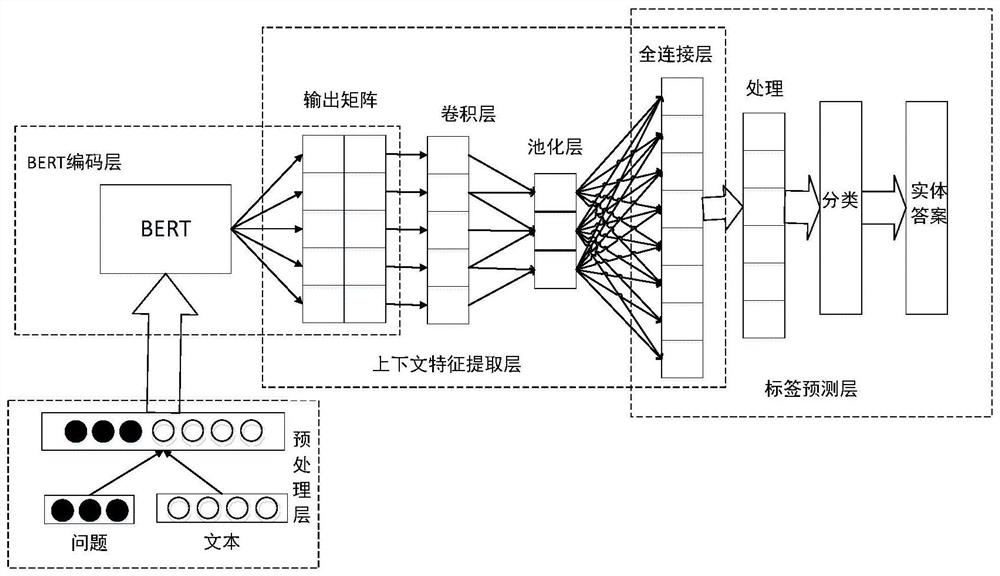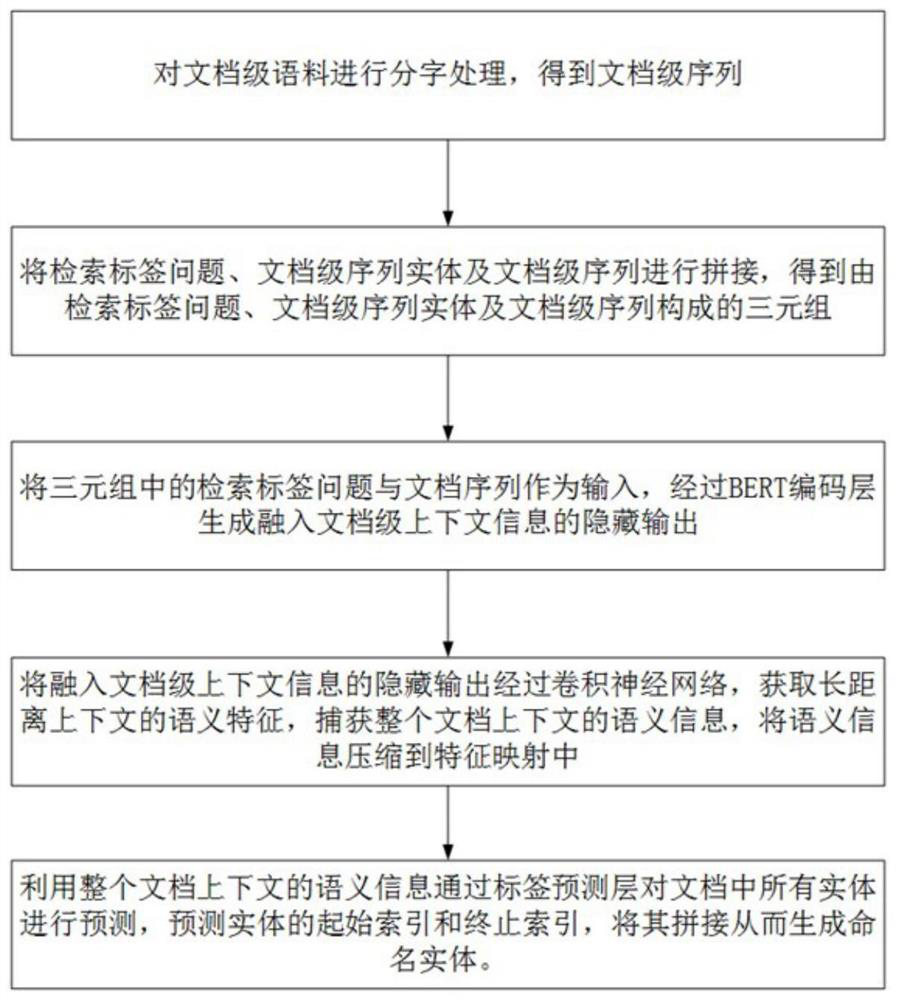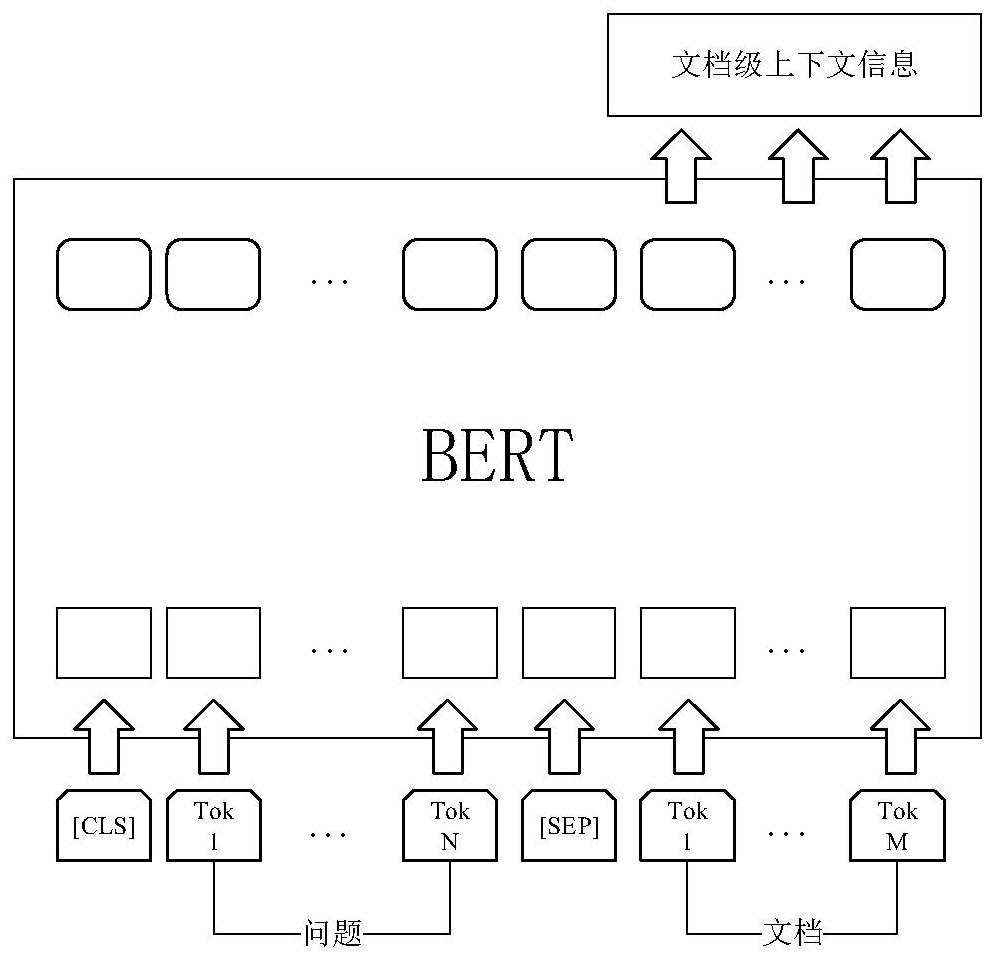Chinese named entity recognition method based on reading understanding
A named entity recognition and reading comprehension technology, applied in the field of natural language processing, can solve problems such as good recognition effect, achieve good guidance and good performance
- Summary
- Abstract
- Description
- Claims
- Application Information
AI Technical Summary
Problems solved by technology
Method used
Image
Examples
Embodiment 1
[0032]Example 1: Such asFigure 1-3 As shown, the Chinese named entity recognition method based on reading comprehension includes the following steps:
[0033]Step 1. Collect and sort out the public data set MSRA, perform word segmentation processing on the document-level corpus, and obtain the document-level sequence;
[0034]In Step 1 of the present invention, the public data set MSRA is collected and sorted. For each type of entity in the MSRA data set, we construct each type of retrieval label problem through "annotation description". The construction of retrieval label problem can be constructed manually by writing software. It can be constructed in other ways in the prior art. For example, an annotator wants to label all entities whose category label is LOC of location, and the label description of the corresponding location LOC is "country, city, mountains", then the retrieval label problem constructed by the corresponding location LOC using the label description is "find the countr...
PUM
 Login to View More
Login to View More Abstract
Description
Claims
Application Information
 Login to View More
Login to View More - R&D
- Intellectual Property
- Life Sciences
- Materials
- Tech Scout
- Unparalleled Data Quality
- Higher Quality Content
- 60% Fewer Hallucinations
Browse by: Latest US Patents, China's latest patents, Technical Efficacy Thesaurus, Application Domain, Technology Topic, Popular Technical Reports.
© 2025 PatSnap. All rights reserved.Legal|Privacy policy|Modern Slavery Act Transparency Statement|Sitemap|About US| Contact US: help@patsnap.com



